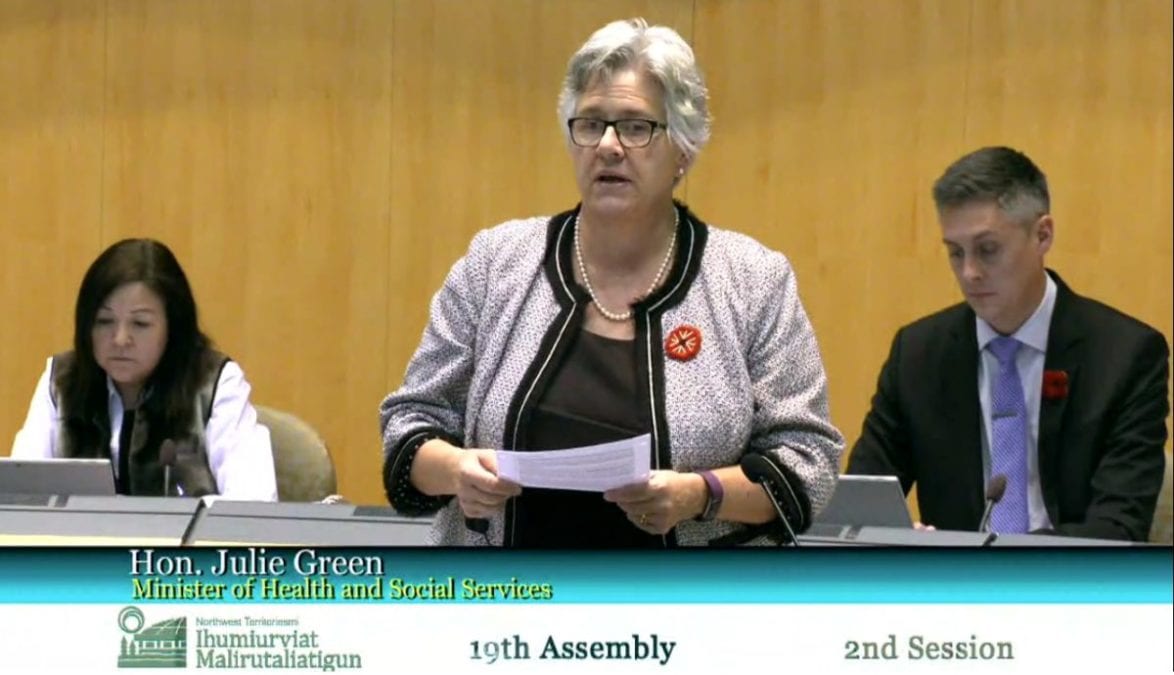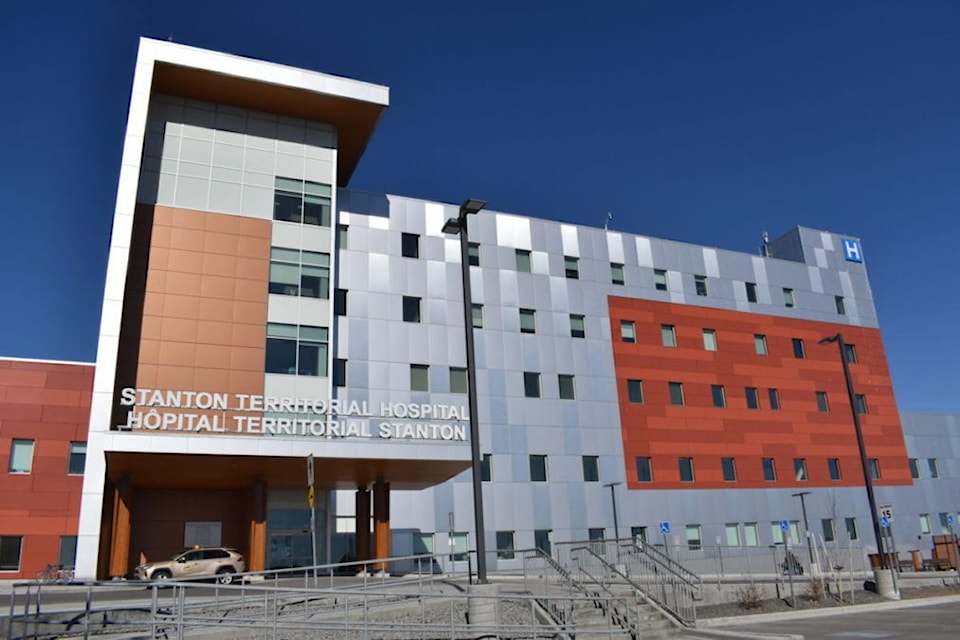Negative health indicators for NWT residents are higher than national averages while other long-term trends show declines in mortality from preventable causes and other promising trends, according to the 2019-2020 report on the NWT Health and Social Services system that Health Minister Julie Green released on Nov. 5.
An increasing number of NWT residents are being hospitalized for mental health issues, substance use and self-harm in a long-term trend, based on seven or more years of HSS data. That includes stays in hospital due to opioid consumption and sexually transmitted diseases.

GNWT image
"The NWT population continues to have higher rates of smoking (35 per cent in 2019-2020 versus 16 per cent nationally), heavy drinking (29 per cent versus 19.3 per cent), and obesity (39.8 per cent versus 26.9 per cent) than the national averages," the report states. "When it comes to physical activity, there is not a statistically significant difference between the NWT and Canada (58.8 per cent versus 56 per cent)."
Although the proportion of mental health hospitalizations because of alcohol or drugs increased to 52.8 per cent for 2019-2020 from 46.5 per cent in 2018-2019, the report states those hospitalizations are part of a declining trend over the long term.
But the health data also show some positive long-term trends among territorial residents, such as decreases in potentially avoidable mortality from preventable and treatable causes, the declining number of children in permanent care, hospitalization rates for ambulatory care sensitive
conditions; and increases in screening for colorectal cancer and seniors receiving flu shots.
The population with a "somewhat or very strong sense of community belonging" increased slightly to just over 80 per cent in 2019-2020 from 79.4 per cent in 2018-2019.
Financial situation
In 2019-20, Health and Social Services spent $545.9 million, of which $335 million went directly to the regional health and social services authorities as core funding for programs, services and salaries.
Total expenditures increased by $59.2 million over the previous year, mainly because of the opening of the new Stanton Territorial Hospital in May 2019, as well as investments in Child and Family Services, the establishment of the combined Day Shelter and Sobering Centre, and the addition of Community Child and Youth Care counsellors in the Beaufort Delta and Sahtu regions.
There were also investments in enhanced services for children and adults with mental and physical disabilities and increased costs associated with foster care and continuing care services.
Compensation and benefits accounted for 59 per cent of total expenditures in 2019-20, with $276.3 million spent on staff.
Costs for medical services not available in the NWT, including hospital and physician care came to $41 million.
Expenses on medical travel, both inside the territory and outside, amounted to $44.2 million, with $16.9 million funded by the GNWT, $5 million from Health Canada and the remainder from third parties.
The two sets of costs are "closely tied, both driven by the volume of residents accessing services and in the case of hospital and physician services are dependent upon the rates charged for specific services, which are set nationally," the report said.
However, a separate annual report on the NWT Health and Social Services Authority (NTHSSA) shows that the body now faces a total accumulated deficit of $126.9 million, as of March 31.
The operating deficit of $26.1 million was $8.3 million higher than the budgeted operating deficit of $17.8 million. That marks an increase from the 2019 annual deficit that came to $12 million.
Some factors behind the fiscal challenges of the NTHSSA include the Covid-19 pandemic; the increased use of temporary doctors or locums; and the opening of Stanton Hospital and accreditation, which is the process of assessing the NTHSSA against other Canadian health and social service standards.
The NTHSSA received a 97 per cent compliance rate from Accreditation Canada, with the Hay River Health and Social Services Authority and Tlicho Community Services Agency also receiving accredited status.
Impact of Covid-19 on health programs
The Covid-19 pandemic has spurred several changes to programs offered by the NTHSSA.
One alteration is that the pandemic has accelerated the NTHSSA's virtual care initiative, increasing "dramatically" the number of client consultations by phone or Telemerge at the height of the initial pandemic.
"This has been a success in the delivery of care closer to home," the report said.
Former territorial medical director Sarah Cook said in a GNWT committee meeting in September that the added capacity of virtual care has reduced the need for more medical travel outside the NWT and the associated self-isolation.
The pandemic also led to the start of virtual care in psychiatry services at Stanton Territorial Hospital in the Adult Psychiatry Unit, with the potential for expanding services to communities.
Work is underway on developing a youth tele-psychiatry program in partnership with the Hospital for Sick Kids (SickKids) based in Toronton, with funding from the Stanton Territorial Hospital Foundation.
But Covid has shifted the status of other activities as well, such as a quality review of the dialysis program that has been deferred until 2021 because Covid restrictions complicate the ability of external reviewers to travel into the territory. Until that review can happen, the service will continue to work with the Alberta Health Services’ Northern Alberta Renal Program.
